Today, we're going to introduce you to one of our partner estates: the Larmandier-Bernier.
History of the domain :
"It's by breaking the rules that champagne is born".
Visit Larmandier family vineyardhas existed since the French Revolution. Since 1846, Louis Larmandier produces champagne wines in the Côte Blanche; champagne and Cramant Nature were already well known at the beginning of the 20th century. From 1988 onwards, Pierre devoted himself to the estate and the pure expression of its terroirs. The abandonment of chemicals in 1992, biodynamic viticulture and indigenous yeasts since 1999, organic certification in 2003, and long ageing on the lees in barrels and foudres were just some of the choices he made.
The 18-hectare vineyard is located on the terroirs of the Côte des Blancs: Vertus is classified Premier Cru, and Cramant, Chouilly, Oger and Avize are all classified Grands Crus. With an average age of 25 years, the vines come from massales selected by grandfathers Larmandier and Bernier, a real natural heritage that is carefully preserved. The vines are cultivated with respect for the terroir and the balance of the plant: ploughing to encourage deep rooting and keep the soil alive, biodynamic viticulture, essential oils and measured yields. The grapes are hand-picked when fully ripe, which means they will be full of flavor and complexity.
The blend comprises 90% of Chardonnay and 10 % of Pinot Noir. The grapes are delicately pressed, and the entire harvest is placed in casks and tuns to allow the aromas to express themselves. Fermentation has been carried out spontaneously with indigenous yeasts since 1999. For a better extension, the wines are aged on the lees for a year, without racking or filtration: making wine before making bubbles. Bottling takes place at the end of July, at the same time as the wines are lowered into the coolness of the cellars, where the second fermentation takes place quietly. They opt for discreet dosage, because their priority has long remained the same: to let the terroir express itself. The wine is distributed in over 150,000 bottles and 75% is exported to over 50 countries.
The great vintages of Champagne Larmandier-Bernier :
-
Champagne Terre de Vertus :
This is a Premier Cru Brut Nature Millésimé. The terroir is unique and south-east-facing, ideally situated in the middle of a vertus hillside. The blend is composed of 100 % of Chardonnay. It is not dosed: the terroir gives off a pure expression with a very singular character thanks to its salinity. Available in bottles and magnums. Made by Sophie and Pierre Larmandier, it was created in 1995.
It is produced from a parcel, Les Barillers, located mid-slope in the Vertus terroir. This parcel's unique soil produces wines that are delicate, healthy and complex. Vinification and ageing take place in oak barrels and foudres. Fermentation is malolactic, which starts spontaneously. After bottling and a year's ageing, the bottles will age in the house cellars for 5 years. This is a non-dosed champagne, to enhance the purity of the wine.
It brings a certain freshness, highlighting all the tension and mineral purity of the cuvée. Ideal to start the meal, its purity accompanies oysters with delicacy, and also goes perfectly with truffles. The nose is extremely soft, with a ripe sensation of aromas. A very soft bubble carried by a salty, lemony breath, extremely invigorating. The finish is delicate.
-
Champagne Vieille Vigne du Levant :
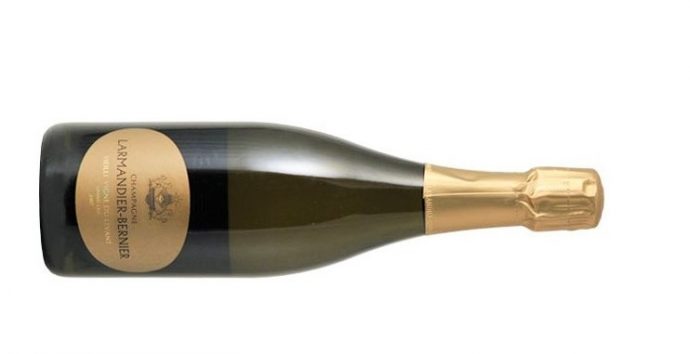
This grand cru extra-brut vintage is rich, creamy, mineral and powerful, with impressive length. The dosage is 2g/l and is available in bottles and magnums. This cuvée unfolds in the glass with a deep, complex nose of citrus zest, crisp yellow apples, smoke, warm bread, mandarin oil and oyster shells. Full-bodied and fleshy, yet incisive, with great concentration of bright acids and a long, intensely saline finish. It's packed with many of the textural properties of a great white Burgundy, married with the cut and chalky grip of Champagne's Côtes de Blancs. The blend is composed of 100 % of Chardonnay and comes from Cramant's south-east-facing terroirs of old vines, benefiting from an exceptional terroir.
The grapes are harvested by hand and aged for 3 to 4 years on laths. The vines are cultivated biodynamically, respecting the terroir, with ploughing to encourage deep rooting and preserve the life of the soil, and measured natural yields. Fermentation takes place in temperature-controlled stainless steel vats using indigenous yeasts. The alcohol content of this cuvée is 12 %. It can be drunk between 2020 and 2037. The vines are 56 years old, and some are over 80; the deep roots and variety of the old stock contribute to the wine's complexity. Like the rest of the vineyard, they are cultivated naturally to achieve perfect ripeness.
Since this cuvée was created in 1988, it has been necessary to differentiate between "Cramant" and "Crémant", and to avoid this confusion, the name has been changed: "Vieille vigne de Cramant" becomes "Vieille Vigne du Levant". The locality of this cuvée is "Bourron Levant", levant meaning "east". This champagne goes well with aperitifs, poultry with morel mushrooms and creamy dishes. It is best left open for some time to appreciate its power, complexity and great length. It can be kept for at least two years, and even much longer.
-
Champagne Les Chemins d'Avize :
This is a Grand Cru Extra Brut Millésimé made from old Chardonnay vines planted in the Avize chalk. It is rich in ripe fruit aromas, with a deep, dense flavor. Dosage is 2g/l. It can be drunk between 2020 and 2030. It was disgorged in October 2019 and shows brilliantly, unfolding in the glass with a lovely nose of citrus oil, fresh apricot, peach and pear. This is complemented by notes of fresh walnut and almond paste. Full-bodied, deep and vinous, this cuvée is also layered, muscular with a concentrated core of ripe fruit, racy acids and a long, mineral finish.
Pierre Larmandier distinguishes itself in the cool, late growing seasons, so this vintage was totally suited to its talents. They complement singular champagnes like the mono cru. Pierre and Sophie had long wanted to create a singular cuvée on the Avize terroir. In 2009, thanks to the acquisition of a smaller press, these 2 parcels were isolated. They are located in the heart of the village of Avize, in the "Chemin de Plivot" and "Chemin de Flavigny" districts.
The soil is very poor, the chalk is outcropping and the vines are 50 years old. A floral, delicate character and a unique mineral density. Aged on lees for 11 months, the bottles are cellared for a minimum of 6 years. The color is golden and sparkling, and the palate, like the nose, exudes white spring flowers, acacia honey, Viennese pastries and southern Italian bergamot. The finish is airy, lightly mentholated, with good minerality. For a perfect match, serve with lobster appetizers, sushi or smoked salmon maki.
-
Champagne Rosé de Saignée :
This is a Premier Cru Extra Brut. This champagne is made from Pinot Noir grapes harvested at the peak of ripeness, and Pinot Gris grapes planted on the same old vines. The grapes are macerated for a few days, a technique rarely used in Champagne. The Pinots are selected on a sorting table, partially destemmed and then macerated for 2 to 3 days. Natural alcoholic fermentation is carried out with indigenous yeasts, in vats and concrete eggs, followed by malolactic fermentation and ageing on lees for a year.
The bottling takes place at the end of July. After a further two years' ageing in the cellars, the wine is disgorged 6 months before release, with a subtle dosage of 2g /L. Normally, most rosés are made by blending white wines with a little red wine from the Champagne appellation. But rosé de saignée is obtained by direct maceration of Pinots Noirs. This vinification process is more demanding, requiring the grapes to be ripe. This is the real rosé. This champagne rosé goes well with aperitifs such as tuna tartare or delicate meats.
-
Champagne Latitude :
This is an extra cru Blanc des Blancs. Historically, this cuvée was called "Tradition", a name chosen in the 1970s by Pierre's parents. The name "Latitude" was chosen to characterize this full-bodied cuvée, with its rich, charming style. It's made from Chardonnays from the same "latitude": the southern virtues. With a generous terroir and grapes harvested at full maturity, this cuvée is the champagne par excellence for festive occasions, while retaining the classic purity of the estate's champagnes.
It is non-vintage and is made up of 40 % of wines from the domaine's perpetual reserve, which began in 2004. The blend is composed of 100 % of Chardonnay and 'a dosage of 4g/ L. It is quite charming, and will delight all palates. It can be kept now or for 2-3 years. It has been biodynamically farmed for over 20 years, and exhibits unfailing serenity. It offers aromas of lemon oils, wet stones and white flowers. The palate is full-bodied, bright and precise, with good concentration, racy acidity, fine mousse and a long, chalky finish.
-
Champagne Longitude :
This is a Premier Cru Extra Blanc des Blancs. As its name suggests, it's the long, pure, mineral, straightforward style of these great Côte des Blancs terroirs, where the earth is almost flush. Historically, this cuvée has been known as "Blanc des Blancs" since the 20th century. It comes exclusively from Chardonnay grapes grown in the Côte des Blancs: Vertus, Oger, Avize and Cramant, which form a line close to the 4th meridian. This cuvée is non-vintage and includes 40 % of wines from the domaine's perpetual reserve, started in 2004.
The blend is composed of 100 % Chardonnay with a dosage of 3g/L. On the palate, there's a milky touch and notes of lemon, with a subtly creamy mousse and a chalky finish. Ideal as an aperitif, its freshness, straightforwardness and minerality will whet your appetite. It can be drunk now or kept for several years.
We hope you enjoy this article. You can find our other articles on partner areas. Find out more about our Larmandier Bernier champagnes in stock :
- Latitude Extra-Brut Blanc de Blancs - Larmandier-Bernier - €55.00
- Longitude 1er cru Extra-Brut Blanc de Blancs - Larmandier-Bernier - €64.00
- Rosé de Saignée 1er Cru Extra-Brut - Larmandier-Bernier - €92.00
- Les Chemins d'Avise Grand Cru 2015 Extra-Brut - Larmandier-Bernier - € 135.00
- Rosé de Saignée 1er Cru Extra-Brut in Magnum - Larmandier-Bernier - €185.00

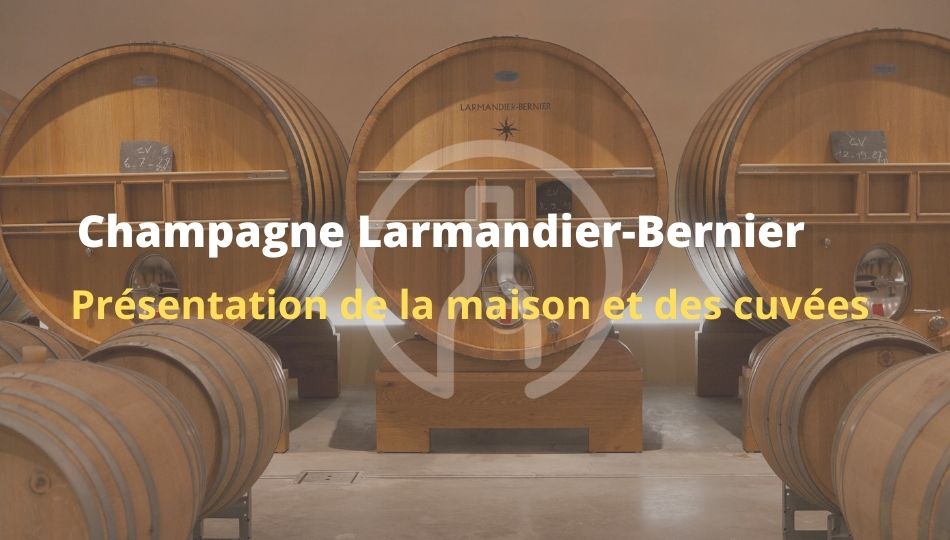

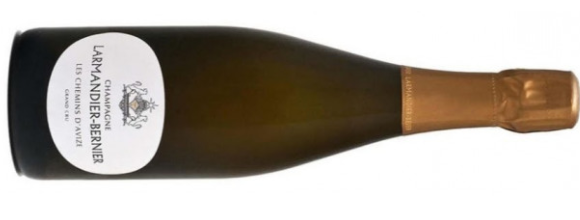
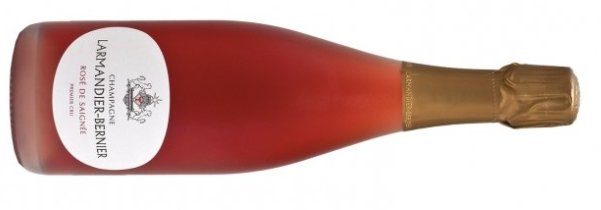
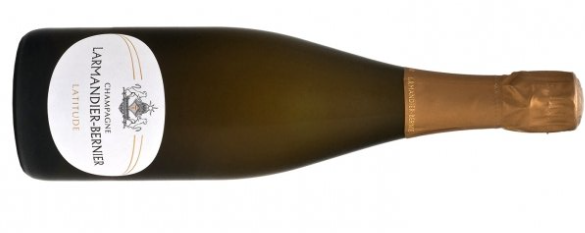
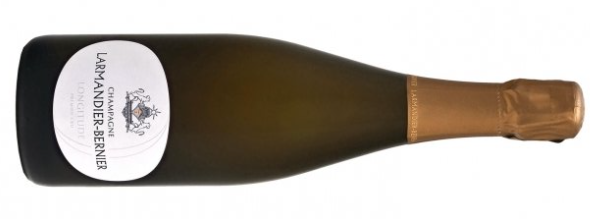



![✨ Comptoir des Millésimes honors Champagne's great winemakers ✨[LINK TO THE ORGANIC CELLAR]We've selected 11 exceptional estates that reveal the full richness of Champagne terroir through unique, refined cuvées. Hugues Godmé - In Verzenay, this family-run biodynamic estate offers precise, vibrant champagnes with a beautiful mineral tension.Egly-Ouriet - A benchmark for the Montagne de Reims, its powerful champagnes, aged for long periods in barrel, impress with their complexity.Moussé Fils - In Cuisles, the Meunier grape is king. Pertois-Moriset - Pure, taut Chardonnay Grands Crus for lovers of chalky finesse. A fine address in Mesnil-sur-Oger.Geoffroy - In Aÿ, this domaine produces fine champagnes, carefully crafted and barrel-aged to reveal the full complexity of the terroir.Larmandier-Bernier - Biodynamic viticulture, exceptional parcels and purity. Crystal-clear, intense champagnes for connoisseurs.Roger Coulon - Eight generations of expertise at Vrigny. Balanced, subtle and elegant champagnes.A. Bergère - In Avize, a dynamic house offering expressive, fruity and accessible cuvées.Adrien Renoir - A promising talent from Verzy, he produces fine, complex champagnes with a true sense of terroir.De Sousa - Emblematic house in Avize. Richness, depth, long ageing: Chardonnay at its peak.Pierre Paillard - In Bouzy, the family magnifies Pinot Noir with vinous, racy and sincere cuvées.📦 Order now on our website#ComptoirdesMillésimes #Champagne #VigneronsIndépendants #GrandVin #ChampagnesdeTerroir #LivraisonRapide](https://www.comptoirdesmillesimes.com/blog/wp-content/plugins/instagram-feed/img/placeholder.png)